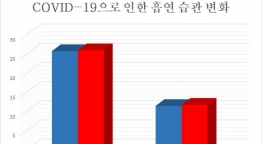Systematic Review for the 2018 AHA/ACC/AACVPR/AAPA/ABC/ACPM/ADA/AGS/APhA/ASPC/NLA/PCNA Guideline on the Management of Blood CholesterolA Report of the American College of Cardiology/American Heart Association Task Force on Clinical Practice Guidelines
Peter W. F. Wilson , Tamar S. Polonsky , Michael D. Miedema , Amit Khera , Andrzej S. Kosinski , and Jeffrey T. KuvinOriginally published10 Nov 2018Circulation. 2018;0:CIR.0000000000000626
Abstract
Background:
The 2013 American College of Cardiology/American Heart Association guidelines for the treatment of blood cholesterol found little evidence to support the use of nonstatin lipid-modifying medications to reduce atherosclerotic cardiovascular disease (ASCVD) events. Since publication of these guidelines, multiple randomized controlled trials evaluating nonstatin lipid-modifying medications have been published.
Methods:
We performed a systematic review to assess the magnitude of benefit and/or harm from additional lipid-modifying therapies compared with statins alone in individuals with known ASCVD or at high risk of ASCVD. We included data from randomized controlled trials with a sample size of >1,000 patients and designed for follow-up >1 year. We performed a comprehensive literature search and identified 10 randomized controlled trials for intensive review, including trials evaluating ezetimibe, niacin, cholesterol-ester transfer protein inhibitors, and PCSK9 inhibitors. The prespecified primary outcome for this review was a composite of fatal cardiovascular events, nonfatal myocardial infarction, and nonfatal stroke.
Results:
The cardiovascular benefit of nonstatin lipid-modifying therapies varied significantly according to the class of medication. There was evidence for reduced ASCVD morbidity but not mortality with ezetimibe and 2 PSCK9 inhibitors. Reduced ASCVD mortality rate was reported for 1 PCSK9 inhibitor. The use of ezetimibe/simvastatin versus simvastatin in IMPROVE-IT (Improved Reduction of Outcomes: Vytorin Efficacy International Trial) reduced the primary outcome by 1.8% over 7 years (hazard ratio: 0.90; 95% CI: 0.84-0.96], 7-year number needed to treat: 56). The PSCK9 inhibitor evolocumab in the FOURIER study (Further Cardiovascular Outcomes Research with PCSK9 Inhibition in Subjects with Elevated Risk) decreased the primary outcome by 1.5% over 2.2 years (hazard ratio: 0.80; 95% CI: 0.73-0.88; 2.2=year number needed to treat: 67). In ODYSSEY OUTCOMES (Evaluation of Cardiovascular Outcomes After an Acute Coronary Syndrome During Treatment With Alirocumab), alirocumab reduced the primary outcome by 1.6% over 2.8 years (hazard ratio: 0.86; 95% CI: 0.79-0.93; 2.8-year number needed to treat: 63). For ezetimibe and the PSCK9 inhibitors, rates of musculoskeletal, neurocognitive, gastrointestinal, or other adverse event risks did not differ between the treatment and control groups. For patients at high risk of ASCVD already on background statin therapy, there was minimal evidence for improved ASCVD risk or adverse events with cholesterol-ester transfer protein inhibitors. There was no evidence of benefit for the addition of niacin to statin therapy. Direct comparisons of the results of the 10 randomized controlled trials were limited by significant differences in sample size, duration of follow-up, and reported primary outcomes.
Conclusions:
In a systematic review of the evidence for adding nonstatin lipid-modifying therapies to statins to reduce ASCVD risk, we found evidence of benefit for ezetimibe and PCSK9 inhibitors but not for niacin or cholesterol-ester transfer protein inhibitors.
Copyright © 의약일보










